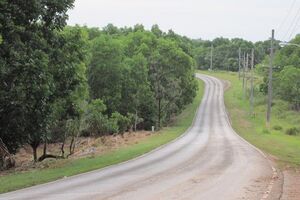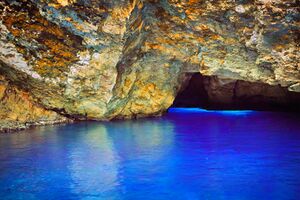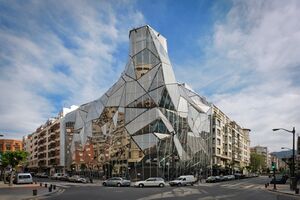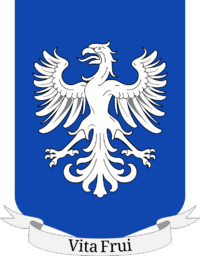Philimania: Difference between revisions
Philimania (talk | contribs) m (→Politics) |
Philimania (talk | contribs) mNo edit summary |
||
| Line 50: | Line 50: | ||
|sovereignty_type = History | |sovereignty_type = History | ||
<!--|established_event1 = Founding of New Cardiff | <!--|established_event1 = Founding of New Cardiff | ||
|established_date1 = | |established_date1 = Kunnen 1603 | ||
|established_event2 = Founding of Philimania | |established_event2 = Founding of Philimania | ||
|established_date2 = | |established_date2 = Phupu 1621 | ||
|established_event3 = Founding of the <br>Legislative Council | |established_event3 = Founding of the <br>Legislative Council | ||
|established_date3 = 6 | |established_date3 = 6 Marto 1654 | ||
|established_event4 = Long Kingdomian Revolt | |established_event4 = Long Kingdomian Revolt | ||
|established_date4 = 10 | |established_date4 = 10 Tebax 1768 - <br>15 Marto 1770 | ||
|established_event5 = Japanese Occupation | |established_event5 = Japanese Occupation | ||
|established_date5 = 17 | |established_date5 = 17 Hunyo 1936 - <br>25 Pusper 1945--> | ||
|area_km2 = | |area_km2 = 224,805 | ||
|area_sq_mi = | |area_sq_mi = | ||
|percent_water = | |percent_water = 0.01 | ||
|population_estimate = {{increase}} 13,420,400 | |population_estimate = {{increase}} 13,420,400 | ||
|population_estimate_rank = | |population_estimate_rank = | ||
| Line 67: | Line 67: | ||
|population_census = 14,088,100 | |population_census = 14,088,100 | ||
|population_census_year = 2000 | |population_census_year = 2000 | ||
|population_density_km2 = | |population_density_km2 = 62.7 | ||
|population_density_sq_mi = | |population_density_sq_mi = 162.3 | ||
|population_density_rank = | |population_density_rank = | ||
|GDP_PPP = {{increase}} | |GDP_PPP = {{increase}} $1.301 trillion | ||
|GDP_PPP_rank = | |GDP_PPP_rank = | ||
|GDP_PPP_year = 2000 | |GDP_PPP_year = 2000 | ||
|GDP_PPP_per_capita = {{increase}} | |GDP_PPP_per_capita = {{increase}} $31,422 | ||
|GDP_PPP_per_capita_rank = | |GDP_PPP_per_capita_rank = | ||
|GDP_nominal = {{increase}} | |GDP_nominal = {{increase}} $1.342 trillion | ||
|GDP_nominal_rank = | |GDP_nominal_rank = | ||
|GDP_nominal_year = 2000 | |GDP_nominal_year = 2000 | ||
|GDP_nominal_per_capita = {{increase}} | |GDP_nominal_per_capita = {{increase}} $30,120 | ||
|GDP_nominal_per_capita_rank = | |GDP_nominal_per_capita_rank = | ||
|Gini_change = steady | |Gini_change = steady | ||
| Line 103: | Line 103: | ||
}} | }} | ||
The '''Republic of Philimania''' (<small>/fɪlɪ'meɪnɪə/ ([[File:Speaker Icon.svg|13px]] [http://ipa-reader.xyz/?text=f%C9%AAl%C9%AAme%C9%AAn%C9%AA%C9%99&voice=Brian listen])</small>), commonly called '''Philimania''', is a {{wp|federal republic}} governed by [[The Philimanian Legislative Council]] (TPLC) in | The '''Republic of Philimania''' (<small>/fɪlɪ'meɪnɪə/ ([[File:Speaker Icon.svg|13px]] [http://ipa-reader.xyz/?text=f%C9%AAl%C9%AAme%C9%AAn%C9%AA%C9%99&voice=Brian listen])</small>), commonly called '''Philimania''', is a {{wp|federal republic}} governed by [[The Philimanian Legislative Council]] (TPLC) in central [[Flonesia]]. Philimania covers over 20 thousand square kilometres and around 532 islands and has a population of over 5 million. The nation consists of 4 provinces. | ||
* History | * History | ||
| Line 124: | Line 124: | ||
[[File:Florentine School, 17th Century Portrait.jpg|thumb|left|200px|Harry Liam, Governor of Philimania from 1621 to his death in 1654.]] | [[File:Florentine School, 17th Century Portrait.jpg|thumb|left|200px|Harry Liam, Governor of Philimania from 1621 to his death in 1654.]] | ||
In | In Kunnen 1603, British and Spanish pilgrims settled on what is now the modern day south coast of the province of [[New Cardiff (Philimania)|New Cardiff]]. They are believed to have established the [[State of New Cardiff]] in which the city of Phrakingdale was founded. Little is known about the pilgrims lives in Philimania but is a well known that over time the British, Spanish and Polynesian on the island had merged into a new group of people known commonly today as the [[Philimanian people|Philimanians]]. By 1620, most of the islands of Philimania were explored and settled, most commonly along the coast as inland Philimania was made of thick jungle. It is unknown how Philimania was formed, but it has been widely agreed by historians that the nation was officially established in Phupu of 1621 when Governor [[Harry Liams]] was appointed as leader of the nation. | ||
On the 7th of | On the 7th of Marto 1634, Philimania was rediscovered by the western world when a Spanish fleet docked at the harbours of Phrakingdale. From at least 1635, Philimanians had regular contact with Europeans on whaling and trading ships who called for provisions and fresh drinking water and supplies. Eventually, a more centralized market would open up in Philimania in 1639 by the Governor of Philimania [[Harry Liams]]. | ||
In 1654, the governor passed away and [[The Philimanian Legislative Council]] was formed as a advising body for the new governor [[George Williams]] who in 1657 renamed the position to the [[President of Philimania]]. | In 1654, the governor passed away and [[The Philimanian Legislative Council]] was formed as a advising body for the new governor [[George Williams]] who in 1657 renamed the position to the [[President of Philimania]]. | ||
| Line 132: | Line 132: | ||
[[File:battleofphorktownhill.jpg|thumb|left|upright|Drawing of the Battle of Phorktown Hill.]] | [[File:battleofphorktownhill.jpg|thumb|left|upright|Drawing of the Battle of Phorktown Hill.]] | ||
During the {{wp|Seven Years' War}}, the island of Largoia, now known as [[Long Kingdom]], was ceded from {{wp|Spain}} to Philimania. There were protests on the streets of Largoia after the cedeing and finally on the 10th of | During the {{wp|Seven Years' War}}, the island of Largoia, now known as [[Long Kingdom]], was ceded from {{wp|Spain}} to Philimania. There were protests on the streets of Largoia after the cedeing and finally on the 10th of Tebax 1768 Largoia [[Long Kingdomian Revolution|revolted]] against Philimania. The general of the Philimanian army, [[Keane Tomlinson]], launched an all-out assault on the beaches of Largoia with insignificant losses. But in Okjatab {{wp|Spain}} declared war on Philimania and their forces were driven off of Largoia, but not after a final stand at the [[Battle of Pices Beach]]. It was estimated that Spanish and Largoian forces suffered twice as much as the Philimanians. | ||
By | By Memesa 1769, Spanish and Long Kingdomian forces were pushing Philimanian forces onto their own island. Eventually, they reached [[Phorktown]], where Philimania managed to kick out the invaders at the [[Battle of Phorktown Hill]] with both sides suffered heavy losses. The war ended in a stalemate but Philimania was forced to give up Largoia during the [[Treaty of Phorktown]] in Marto of 1770. | ||
=== Pre-Japanese Era === | === Pre-Japanese Era === | ||
| Line 144: | Line 144: | ||
Over the course of the nineteenth century, Philimania's population grew from 1.2 million to 12 million. The {{wp|Great Irish Famine}} brought a large influx of Irish immigrants; more than 500,000 were living in Philimania by 1860. There was also extensive immigration from the German provinces, where revolutions had disrupted societies, and Germans comprised another 20% of Philimania's population by 1880. | Over the course of the nineteenth century, Philimania's population grew from 1.2 million to 12 million. The {{wp|Great Irish Famine}} brought a large influx of Irish immigrants; more than 500,000 were living in Philimania by 1860. There was also extensive immigration from the German provinces, where revolutions had disrupted societies, and Germans comprised another 20% of Philimania's population by 1880. | ||
The beginning of the {{wp|Industrial Revolution}} in Philimania is usually pegged to the opening of a textile factory in [[Stefshire]], [[Dioran]], in 1802 by the recent English immigrant [[John Chamberlain]]. The Industrial Revolution in Philimania led to a boost of the production of Philimanian goods such as textile, timber, and coal. The industrialization soon led to the founding of the [[Philimanian Rail Company]] in 1847 and the construction of the [[Philimanian InterCity Network]] from | The beginning of the {{wp|Industrial Revolution}} in Philimania is usually pegged to the opening of a textile factory in [[Stefshire]], [[Dioran]], in 1802 by the recent English immigrant [[John Chamberlain]]. The Industrial Revolution in Philimania led to a boost of the production of Philimanian goods such as textile, timber, and coal. The industrialization soon led to the founding of the [[Philimanian Rail Company]] in 1847 and the construction of the [[Philimanian InterCity Network]] from Kunnen 1847 to Tebax 1859 which sped up transportation of goods and people. In 1911, the [[Phorktown Subway]] opened, making Philimania the first nation in {{wp|South America}} to do so. | ||
=== Japanese Occupation === | === Japanese Occupation === | ||
| Line 150: | Line 150: | ||
[[File:The war in pacific pictures.jpg|thumb|Philimanian and American Forces at the [[Battle of Mount Meuce]].]] | [[File:The war in pacific pictures.jpg|thumb|Philimanian and American Forces at the [[Battle of Mount Meuce]].]] | ||
On the 18th of | On the 18th of Tebax 1935, the [[World War II (Philimania)|Second World War]] began in the {{wp|Pacific Ocean|Pacific}} with the Japanese invasion of {{wp|Papua New Guinea|New Guinea}}. After 4 months, most of the Pacific and {{wp|Oceania}} was occupied by Japan. On the 1st of Enero 1936, the {{wp|United States}} declared war on {{wp|Japanese Empire|Japan}} after the Japanese [[Invasion of Hawaii]] in Disemba, but by Pusper of 1936, the United States had been nearly defeated in the Pacific with some forces retreating to Philimania. In Kunnen the same year {{wp|Japanese Empire|Japan}} declared war on Philimania after president [[George Howard]] refused to remove US troops that had retreated to the islands. Philimania fought fiercely initally head on but after a few weeks resorted to using Guerrilla tactics after Japan had completely dominated the seas around the nation. The most deadliest battles of the invasion of Philimania was the [[Battle of Mount Meuce]] which saw around 90,000 casualties on both sides, the 2nd deadliest in the Pacific Theatre. The battle lasted for 2 days from the 3rd to 5th of Hunyo 1937. In Memesa of 1938, [[New Phork]] was captured after [[Battle of new Phork|a long battle]] forcing the [[The Philimanian Legislative Council|Legislative Council]] to surrender. Despite that, the people of Philimania didn't, in Memesa, the [[Philimanian Resistance]] was formed by a few Council members, soldiers, and civilians to continue fighting against Japanese control. | ||
In | In Okjatab of 1939, Japan declared war on {{wp|Peru}} to solidify their hold over the Southern Pacific Region leading to the involvement of {{wp|Chile}}, {{wp|Ecuador}}, and {{wp|Argentina}} in the war forming what is known as the [[South American Alliance]]. In Pusper of 1940, the Alliance broke through Japanese naval defenses with the aid of the [[Philimanian Resistance]] at the [[Battle of the Philimanian Sea]] which lasted for 26 days from the 11th of Marto to the 6th of Pusper. Although Philimania would not be liberated until 1945, it was generally believed to be its first step. | ||
Around the same time of the [[Battle of the Philimanian Sea]], {{wp|Australia|Australian}} forces successfully pushed through Japanese occupied {{wp|Vanuatu}} and {{wp|Fiji}}, eventually managing to secure {{wp|Samoa}}, {{wp|Cook Islands}}, {{wp|French Polynesia}}, and the {{wp|Pitcairn Islands}} from between | Around the same time of the [[Battle of the Philimanian Sea]], {{wp|Australia|Australian}} forces successfully pushed through Japanese occupied {{wp|Vanuatu}} and {{wp|Fiji}}, eventually managing to secure {{wp|Samoa}}, {{wp|Cook Islands}}, {{wp|French Polynesia}}, and the {{wp|Pitcairn Islands}} from between Pusper of 1940 to Gunyana 1942. In Disemba the same year, a joint operation of the {{wp|United States}}, {{wp|Australia}}, and [[South American Alliance|South America]] with the help of the [[Philimanian Resistance|Resistance]] to liberate Philimania and secure the surronding islands. After 3 years from Disemba of 1942 to Pusper of 1945, Japanese forces were kicked out of Philimania officially ending the Japanese Occupation of Philimania. After a few days, on the 30th of Pusper, the government was restored in [[New Phork]]. | ||
After the [[World War II|Second World War]] ended in the Pacific Theatre on the 2nd of | After the [[World War II|Second World War]] ended in the Pacific Theatre on the 2nd of Gunyana 1945 when the {{wp|United States}} dropped 2 {{wp|Atomic bombs}} on the Japanese city of {{wp|Hiroshima}} and {{wp|Nagsaki}}, Japan was forced to pay $5,000,000 (roughly $177,800,000 in today's money) in reparation. | ||
=== Modern Era === | === Modern Era === | ||
| Line 162: | Line 162: | ||
In 1957, the [[West Island Wildlife Preserve]] was established in the northern part of the West Island to protect native animals such as the [[Wee-Wee Fish]] from poaching and the likes. From at least 1967, some InterCity railway lines were replaced with highspeed trains providing shorter timespan when travelling between cities. | In 1957, the [[West Island Wildlife Preserve]] was established in the northern part of the West Island to protect native animals such as the [[Wee-Wee Fish]] from poaching and the likes. From at least 1967, some InterCity railway lines were replaced with highspeed trains providing shorter timespan when travelling between cities. | ||
On 25 | On 25 Pulungana 1978, the United Nations Security Council passed Resolution 440 recommending Philimania's admission to the United Nations. The United Nations General Assembly approved admission for Philimania pursuant to on 6 Disemba 1978. | ||
In 1984, [[Foster International Airport]] was built by the state-owned cooperation [[Huton Incorporated]]. | In 1984, [[Foster International Airport]] was built by the state-owned cooperation [[Huton Incorporated]]. | ||
| Line 172: | Line 172: | ||
<!--[[File:Geography map.png|thumb|Physical map of Philimania]]--> | <!--[[File:Geography map.png|thumb|Physical map of Philimania]]--> | ||
''TBA'' | |||
The land area of Philimania is | <!--The land area of Philimania is 224,805 km² (88,200 sq mi) and is bordered by the Nullaric Ocean on all sides. Philimania is 150.3 kilometres (93.4 miles) north of the {{wp|equator}} and comprises of 3 islands, Philimania, [[West Island]], and [[North Island]]. The islands is surrounded by a coral reef, which is exposed at low tide and dotted with pinnacles. The tallest point in Philimania is [[Mount Phanes]] standing at 976 meters in the West of [[North Philimania]]. The most of inland Philimania is covered by the [[Harodan Rainforest]]. [[North Island]] is mostly covered in swamp known as the [[Retop Lagoon]]. There are 4 rivers in Philimania with the longest of which is the [[Brades River]] which runs from [[Mount Naro]] to the west coast of Philimania.--> | ||
=== Enviroment === | === Enviroment === | ||
[[File:West Island reserve.jpg|thumb|left|The West Island Wildlife Reserve.]] | ''TBA'' | ||
<!--[[File:West Island reserve.jpg|thumb|left|The West Island Wildlife Reserve.]] | |||
Philimania has a history of strong environment conservation. For example, The northern part of the [[West Island]] are protected under the [[West Island Wildlife Preserve]], which was established in 1957. | Philimania has a history of strong environment conservation. For example, The northern part of the [[West Island]] are protected under the [[West Island Wildlife Preserve]], which was established in 1957. | ||
While much of Philimania remains free of environmental degradation, areas of concern include illegal {{wp|Blast fishing|dynamite fishing}}, inadequate {{wp|Waste management|solid waste disposal}} facilities in [[Dioran]] and extensive sand and coral dredging in the [[Retop Lagoon]]. | While much of Philimania remains free of environmental degradation, areas of concern include illegal {{wp|Blast fishing|dynamite fishing}}, inadequate {{wp|Waste management|solid waste disposal}} facilities in [[Dioran]] and extensive sand and coral dredging in the [[Retop Lagoon]].--> | ||
=== Biodiversity === | === Biodiversity === | ||
| Line 271: | Line 272: | ||
|Nov sun = 183.0 | |Nov sun = 183.0 | ||
|Dec sun = 182.9 | |Dec sun = 182.9 | ||
|date= | |date=Tebax 2010}} | ||
=== Administrative divisions === | === Administrative divisions === | ||
Philimania is divided into 4 provinces, [[North Philimania]], [[West | Philimania is divided into 4 provinces, [[North Philimania]], [[West Islands]], [[Dioran]], and [[New Cardiff (Philimania)|New Cardiff]] which are then divided into numerous counties. | ||
<!--{| class="wikitable" style="width:808px;text-align:center;" | <!--{| class="wikitable" style="width:808px;text-align:center;" | ||
| Line 302: | Line 303: | ||
== Demographics == | == Demographics == | ||
[[File:Population of Philimania.png|thumb|left|Total population growth of Philimania 1800-2000.]] | <!--[[File:Population of Philimania.png|thumb|left|Total population growth of Philimania 1800-2000.]]--> | ||
''TBA'' | ''TBA'' | ||
| Line 468: | Line 469: | ||
The [[President of the Legislative Council Philimania|President of Philimania]] is elected directly by the public, and formally approved by the [[The Philimanian Legislative Council|Legislative Council]]. The ministers of the cabinet are then proposed by the president, who are in turn either approved or rejected by the [[The Philimanian Legislative Council|Legislative Council]]. The current president and vice-president since 2000 is [[Nel Karlson]] and [[Henry Field]] of the [[Philimanian Liberal Party]] (PLP). | The [[President of the Legislative Council Philimania|President of Philimania]] is elected directly by the public, and formally approved by the [[The Philimanian Legislative Council|Legislative Council]]. The ministers of the cabinet are then proposed by the president, who are in turn either approved or rejected by the [[The Philimanian Legislative Council|Legislative Council]]. The current president and vice-president since 2000 is [[Nel Karlson]] and [[Henry Field]] of the [[Philimanian Liberal Party]] (PLP). | ||
In Philimania's political history, since the founding of the [[The Philimanian Legislative Council|Legislative Council]] in 1654, the [[Philimanian Liberal Party]] (PLP) was most popular party and kept its status until the [[1989 Philimania legislative election]] when the [[Philimanian Democratic Party]] (PDP) surpassed them for the first time and had held its superior status until the [[1999 Philimania legislative election|1999 election]]. Since 1654, 74 Legislative Council elections have been held, with the most recent election being held on 28 | In Philimania's political history, since the founding of the [[The Philimanian Legislative Council|Legislative Council]] in 1654, the [[Philimanian Liberal Party]] (PLP) was most popular party and kept its status until the [[1989 Philimania legislative election]] when the [[Philimanian Democratic Party]] (PDP) surpassed them for the first time and had held its superior status until the [[1999 Philimania legislative election|1999 election]]. Since 1654, 74 Legislative Council elections have been held, with the most recent election being held on 28 Memesa 1999. | ||
=== Foreign Relations === | === Foreign Relations === | ||
''TBA'' | ''TBA'' | ||
<!--Since 1700, Philimania as a small political, economic and military power has established often extensive and diplomatic relations with a number of nations, including many of its Pacific neighbors, like {{wp|Micronesia}} and {{wp|Australia}} and with almost every {{wp|South American}} country. 32 countries maintains an embassy in [[New Phork]] and further consulates in other major Philimanian cities. On 25 | <!--Since 1700, Philimania as a small political, economic and military power has established often extensive and diplomatic relations with a number of nations, including many of its Pacific neighbors, like {{wp|Micronesia}} and {{wp|Australia}} and with almost every {{wp|South American}} country. 32 countries maintains an embassy in [[New Phork]] and further consulates in other major Philimanian cities. On 25 Pulungana 1978, the United Nations Security Council passed Resolution 440 recommending Philimania's admission to the United Nations. The United Nations General Assembly approved admission for Philimania pursuant to on 6 Disemba 1978. Philimania has since joined several other international organizations. | ||
The country has played an influential role throughout much of modern {{wp|Pacific}}'s history during the mid 20th century. Especially with Philimania's role during the [[World War II (Philimania)|Second World War]], which had led to a maintained relation with nations such as the {{wp|United States}}, {{wp|Australia}} and {{wp|Ecuador}}. | The country has played an influential role throughout much of modern {{wp|Pacific}}'s history during the mid 20th century. Especially with Philimania's role during the [[World War II (Philimania)|Second World War]], which had led to a maintained relation with nations such as the {{wp|United States}}, {{wp|Australia}} and {{wp|Ecuador}}. | ||
Revision as of 12:07, 9 December 2022
This article and its associate pages are undergoing a shift in multiverse, texts in this article may conflict with other pages taking place in the same universe. Please comment on this article's talk page to share your input, comments and questions. |
This article is incomplete because it is pending further input from participants, or it is a work-in-progress by one author. Please comment on this article's talk page to share your input, comments and questions. Note: To contribute to this article, you may need to seek help from the author(s) of this page. |
Republic of Philimania | |
|---|---|
| Motto: Vita Frui ("Enjoy Life") | |
| Anthem: "Toku Nuu" (English: "My Nation") | |
| Location of Philimania (dark green) – in Flonesia (grey) Location of Philimania (dark green) – in Flonesia (grey) | |
| File:TBA | |
| Capital | New Phork City |
| Largest city | New Phork City |
| Official languages | Neragese |
| Recognised regional languages | Paqueon |
| Ethnic groups (1999) | 48% Philimanian 24% Paqueon 22.2% Neragese 4% Other Oranish 1.7% Naphto-Philimanians 0.1% Naphtorans |
| Demonym(s) | Philimanian |
| Government | Constitutional Federal Republic |
| Nel Karlson | |
| Henry Field | |
| Legislature | |
| Legislative Council | |
| House of Representatives | |
| History | |
| Area | |
• Total | 224,805 km2 (86,798 sq mi) |
• Water (%) | 0.01 |
| Population | |
• 2000 estimate | |
• 2000 census | 14,088,100 |
• Density | 62.7/km2 (162.4/sq mi) |
| GDP (PPP) | 2000 estimate |
• Total | |
• Per capita | |
| GDP (nominal) | 2000 estimate |
• Total | |
• Per capita | |
| Gini | low |
| HDI | very high |
| Currency | Creit (β) (CET) |
| Time zone | X |
| Date format | dd/mm/yyyy (CE) |
| Driving side | left |
| Calling code | X |
| ISO 3166 code | PH |
| Internet TLD | .ph |
The Republic of Philimania (/fɪlɪ'meɪnɪə/ ( listen)), commonly called Philimania, is a federal republic governed by The Philimanian Legislative Council (TPLC) in central Flonesia. Philimania covers over 20 thousand square kilometres and around 532 islands and has a population of over 5 million. The nation consists of 4 provinces.
- History
Philimania is a developed country, with a high national GDP of P$1.342 trillion. The per capita GDP of P$30,120 ranks highly in the world. The economy is fueled almost entirely by the private sector, which is quite specialized and led by the Tourism industry, with significant contributions from Book Publishing, Information Technology, and Arms Manufacturing. The average income is $65,825 and evenly distributed, with the richest citizens earning only 2.7 times as much as the poorest. Philimania ranks highly in civil rights, political freedom, and economic freedom. Philimania is a small power, as well as a member of several international organizations, including the Union of Realms.
Etymology
TBA
History
TBA
Geography
TBA
Enviroment
TBA
Biodiversity
Philimania is one of X megadiverse countries in Gentu according to X, and it has the X-most biodiversity per square kilometer of any nation.
Philimania has 900 bird species. In addition to more than 10,000 species of plants, the country has 97 endemic reptiles, 138 endemic amphibians, and 4,000 species of butterfly. As of the writing of the plan in 2005, 12% of Philimania's land area was in a protected area; however, the plan also states that 35% of the land must be protected in order to truly preserve the nation's biodiversity. Current protected areas include 10 national parks, 12 wildlife refuges, 7 ecological reserves, and other areas.
Climate
Philimania experiences a humid tropical climate with generally cool temperatures and plentiful rainfall all year round. Because of the nations close proximity at the equator, Philimania experiences little variation in daylight hours during the course of a year. Both sunrise and sunset occur each day at the two six o'clock hours.
The temperature in Philimania ranges between 30 and 35 °C (86 and 95 °F) at the coast and 30 and 31 °C (86 and 87.8 °F) inland during the day and is quite stable at around 24 °C (75.2 °F) at night.
| Climate data for Philimania | |||||||||||||
|---|---|---|---|---|---|---|---|---|---|---|---|---|---|
| Month | Jan | Feb | Mar | Apr | May | Jun | Jul | Aug | Sep | Oct | Nov | Dec | Year |
| Average high °C (°F) | 30.6 (87.1) |
30.6 (87.1) |
30.9 (87.6) |
31.3 (88.3) |
31.4 (88.5) |
31.0 (87.8) |
30.6 (87.1) |
30.7 (87.3) |
30.9 (87.6) |
31.1 (88.0) |
31.4 (88.5) |
31.1 (88.0) |
31.0 (87.7) |
| Daily mean °C (°F) | 27.3 (81.1) |
27.2 (81.0) |
27.5 (81.5) |
27.9 (82.2) |
28.0 (82.4) |
27.6 (81.7) |
27.4 (81.3) |
27.5 (81.5) |
27.7 (81.9) |
27.7 (81.9) |
27.9 (82.2) |
27.7 (81.9) |
27.6 (81.7) |
| Average low °C (°F) | 23.9 (75.0) |
23.9 (75.0) |
24.1 (75.4) |
24.4 (75.9) |
24.5 (76.1) |
24.2 (75.6) |
24.1 (75.4) |
24.3 (75.7) |
24.5 (76.1) |
24.4 (75.9) |
24.4 (75.9) |
24.2 (75.6) |
24.2 (75.6) |
| Average rainfall mm (inches) | 271.8 (10.70) |
231.6 (9.12) |
208.3 (8.20) |
220.2 (8.67) |
304.5 (11.99) |
438.7 (17.27) |
458.2 (18.04) |
379.7 (14.95) |
301.2 (11.86) |
352.3 (13.87) |
287.5 (11.32) |
304.3 (11.98) |
3,758.3 (147.97) |
| Average rainy days | 19.0 | 15.9 | 16.7 | 14.8 | 20.0 | 21.9 | 21.0 | 19.8 | 16.8 | 20.1 | 18.7 | 19.9 | 224.6 |
| Mean monthly sunshine hours | 198.4 | 194.9 | 244.9 | 234.0 | 210.8 | 168.0 | 186.0 | 176.7 | 198.0 | 179.8 | 183.0 | 182.9 | 2,357.4 |
Administrative divisions
Philimania is divided into 4 provinces, North Philimania, West Islands, Dioran, and New Cardiff which are then divided into numerous counties.
Transport and infrastructure
Foster International Airport in New Phork is the only public airport in Philimania. It provides scheduled direct flights with X, X, X and X.
Freight, military and cruise ships often call at Phrakingdale Harbor, Gardton Harbour, or Harpville Harbour. Philimania has around 1906 km or 1184.3 mi of highways, only 456 km or 283.3 mi are paved. Driving is on the left and the speed limit is 100 km/h (62 mph) on most highways.
The railroad network of Philimania is 1626 km long and is traversed daily by up to 30,000 passenger and cargo trains. The partially state-owned largest railroad company Philimanian Rail Company serves and oeprates a large number of trains, passengers and infrastructure components. Most of the railroad infrastructure is maintained, operated and financed by the Ministry of Infrastructure since 1964. The network is used by regular and high speed trains, most notably the InterCity trains travelling at between 240 km/h (149 mph) to under 370 km/h (230 mph), providing expansive domestic and international rail connections.
Confined urban underground rapid transit such as the New Phork Underground are used by approximately 1.757 million passengers daily. Taxis and public transport in general are all well developed mostly in major Philimanian cities but some in smaller cities as well such as Bridging, Seerno and Lensaw.
Demographics
TBA
Language
The most widely used language is Neragese which is also the de facto national language. Approximately 80% of the population speaks English as a first language, with another 9% speaking Spanish as a first language with only 11% of the population speaking their own native language as a first language.
TBA
Religion

TBA
Largest Cities
Philimania is a highly urbanized country. Its largest cities include New Phork, Phorktown, Stefshire, Shewood, Croufield, Meucester, Phrakingdale, Watchingham, Harpville, and Gardton features a number of large metropolitan areas summing up urban agglomerations, such as the Greater New Phork. Geographically, most urban regions are concentrated along rivers or on the coastal regions of the country due to the dense jungle in the central region of the country.
Largest cities or towns in Philimania
2000 census | |||||||||
|---|---|---|---|---|---|---|---|---|---|
| Rank | Province | Pop. | Rank | Province | Pop. | ||||
 New Phork  Phorktown |
1 | New Phork | North Philimania | 3,965,900 | 11 | Bridging | West Island | 191,784 |  Stefshire  Shewood |
| 2 | Phorktown | New Cardiff | 2,103,200 | 12 | Seerno | Dioran | 125,549 | ||
| 3 | Stefshire | Dioran | 1,320,190 | 13 | Lensaw | New Cardiff | 92,040 | ||
| 4 | Shewood | West Island | 993,742 | 14 | Henton | Dioran | 52,443 | ||
| 5 | Croufield | North Philimania | 873,427 | 15 | Reddingham | North Philimania | 30,225 | ||
| 6 | Meucester | New Cardiff | 606,854 | 16 | Zeddville | North Philimania | 25,268 | ||
| 7 | Phrakingdale | New Cardiff | 454,471 | 17 | Newton | North Philimania | 19,945 | ||
| 8 | Watchingham | North Philimania | 432,938 | 18 | Esterham | New Cardiff | 15,342 | ||
| 9 | Harpville | North Philimania | 225,647 | 19 | Tishter | Dioran | 14,050 | ||
| 10 | Gardton | North Philimania | 206,769 | 20 | Erding | West Island | 12,980 | ||
Politics
Government
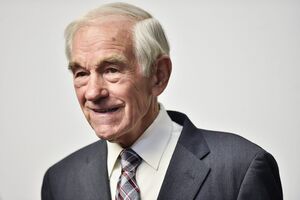
The Republic of Philimania is a constitutional federal republic with the Philimanian Constitution being the supreme law of the land. Exercising the separation of powers, the political system of the country is divded into the executive, legislative and judiciary branch, each controlled by a separate institution. The executive branch is headed by the President of Philimania. Can veto legislative bills, appoint cabinet members and Supreme Court Justices. The legislative branch is made up of the Legislative Council and the House of Representatives. Makes federal law, declares war, allocates federal funds and approves treaties. The judicial branch makes up the Supreme Court and lower federal courts. Has the power of judicial review, and is the highest legal authority after the Constitution.
The President of Philimania is elected directly by the public, and formally approved by the Legislative Council. The ministers of the cabinet are then proposed by the president, who are in turn either approved or rejected by the Legislative Council. The current president and vice-president since 2000 is Nel Karlson and Henry Field of the Philimanian Liberal Party (PLP).
In Philimania's political history, since the founding of the Legislative Council in 1654, the Philimanian Liberal Party (PLP) was most popular party and kept its status until the 1989 Philimania legislative election when the Philimanian Democratic Party (PDP) surpassed them for the first time and had held its superior status until the 1999 election. Since 1654, 74 Legislative Council elections have been held, with the most recent election being held on 28 Memesa 1999.
Foreign Relations
TBA
Military
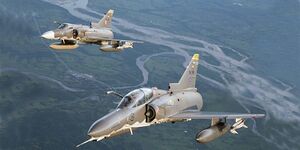
TBA
Economy
with a GDP of P$1.342 trillion and a GDP per capita of P$30,120, the Economy of Philimania is the 13th largest in both the world and South Domica. Philimania is considered to be a developed country with the 62nd highest Human Development Index of the world and boasting one of the largest rates of nominal GDP per capita in any country. The private sector is estimated to constitute 91% of the economy, with federal, regional, and local government accounting for 8.1%. Philimania employed its largest labour force of 11.4 million people in 1998, or 85% of the population, in its history; its unemployment rate was estimated at 0% in 1998, largely due to excellent employment regulations throughout the country.
Philimania's economy consists primarily of tourism, subsistence agriculture and fishing. While the couuntry has access to some resource deposits such as coal and a long history of mining, it is crucially dependant on the import of resources and energy assets from abroad. The most competitive sectors of the Philimanian industry are considered to be the automobile, agriculture and the fishing sectors. The most important trading partners of Philimania in 1999 were X at a trading volume of $151.37 billion, X with $146.60 billion, X with $126.71 billion, and X with $119.28 billion.
The income tax has three brackets with progressive rates of 9.3 percent, 15 percent, and 19.6 percent respectively. Corporate tax is four percent, and the sales tax is zero. There are no property taxes.
Tourism
Philimania is the 13th most visited country in the world, with tourist arrivals numbered some 35.9 million in 2018. Tourism as an economic sector made a considerable contribution to the national economy, generating a revenue of $135 billion, or 10.4% of Philimania's GDP in 2019. 27 of Philimania's counties are registered in some form of tourist agency. 2,842 museums, 94 theatres, 7 amusement parks, 45,940 tennis courts, approximately 87 beaches. 301 golf courses, more than 17,000 kilometres of hike trails and 9,000 kilometres of biking ways, and numerous scuba diving and snorkeling spots are all available and accessible to tourism activities. Additionally, long-term prospects for the key tourist sector have been greatly bolstered by the expansion of air travel in the Nullaric.
Agriculture
While the agricultural industry gradually diminished in their importance to the national economy, it is still considered internationally relevant in generating a wide array of products, being the fourth-largest exporter of agricultural products in South America. The domestic agricultural industry is extremely productive in that it is able to sustain and cover more than 85% of the Philimanian population's needs for food in 2019, mainly due to extensive fertile soils in northern Philimania and sophisticated modern technology used in agriculture.
Principal agricultural exports of Philimania include products of lifestock, including poultry, beef and pork, dairy products, wheat, potatoes, and fruit. Processed food such as variations of cheese and bread are also important, and form staples of Philimanian cuisine.
Science and technology
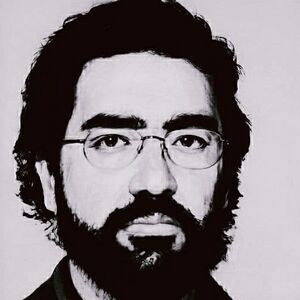
Philimania is an internationally significant and renowned location of technology and science. Since the Industrial Revolution, Philimanian scientists participated immensly in the foundation of modern science; especially the economic productivity of multiple industrial sectors and the transfer of knowledge to practical use proved pivotal in the scientific development of the Philimanian academic field. Publications of scientific matters receive international acclaim and domestic public popularity; scientific journals published in Philimania include Harefind and Archaringe, while Philimania as a research host produced more than 2% of the world's scientific research papers in 2000.
Institutions of research and science in Philimania are embodied through universities. Most of which are in public ownership and service, but their research activities are often financed by third parties such as foundations, companies, and other. The University of New Phork and the International University of Philimania remain one of the most renowned and prestigious universities in the world. Apart from the country's universities, a large number of research organizations are active across Philimania and abroad, represented and coordinated through associations and councils in compliance with the Ministry of Education and each university. the most famous of which include the Joseph Hinderman Society for basic research, the Craftsman Society as the country's largest scientific society, and the Alban Society for applied research.
Culture
Philimania is home to a variety of cultures, a result of a liberal immigration policy. Philimanian culture is generally considered "western", derived from traditions of Oranish and Iolonan culture. Like other Domican nations, Philimania has been described as a melting pot where several cultures join into one.
Philimanians have been described as very compassionate, hard-working, and competitive. This has resulted in great economic productivity and a libertarian form of government. This has also made Philimania a popular destination for immigrants. Philimanians are also firm believers in equality and do not think that one social class should have more rights than others.
Cuisine

Philimania is home to many different cuisines, a result of a liberal immigration policy. But mainstream Philimanian cuisine is similar to that in Iolona cultures with some aspects coming from Oranland. The Wee-Wee Fish, an also an important part of Philimanian cuisine and is often fried, boiled, and minced into small Pastochos, a type of tart made in Philimania. Philimanian cuisine also features dishes such as pineapple pie, Philimanian curry, panipopo, and coconut cake. Bread is also an important part in Philimanian cuisine, dishes wih bread in Philimania includes Luau Bread, Cassavon, and Po'eo.
Places serving Philimanian cuisine can be found all over the country in foodstands, restaurants, and shopping malls. Philimanian cuisine are also sold in night markets which would appear during the weekends and holidays.
Sports
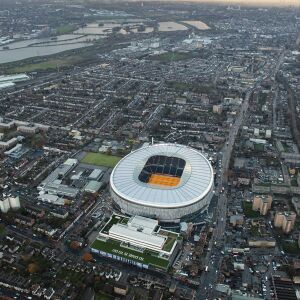
TBA
Education
TBA
Architecture
TBA
Social Media
TBA



